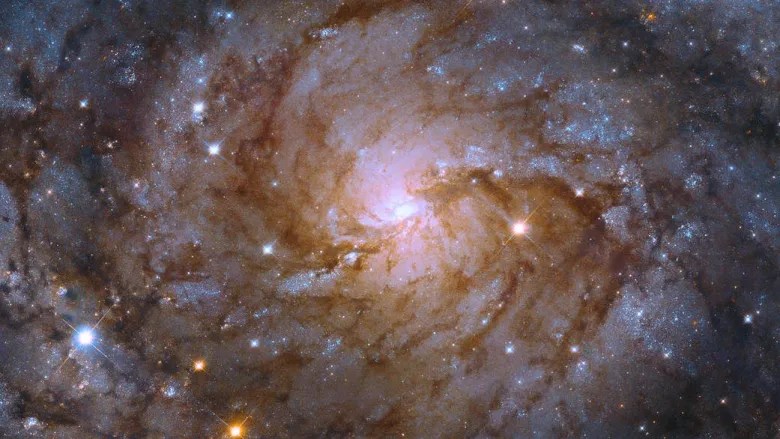'Hidden Galaxy' spotted behind Milky Way by Hubble telescope
IC 342, commonly known as Caldwell 5, is crowded with thick cosmic gas, dark dust, and glowing stars that make it difficult to view.
-

A zoomed-in view of the galaxy IC 342 as seen by the Hubble Telescope released by NASA
The Hubble Space Telescope has captured a stunning image of spiral galaxy IC 342, commonly known as Caldwell 5.
Scientists have had some previous trouble monitoring it due to obstructions in the way, earning it the label "hidden", according to NASA.
In a May 11 statement, NASA wrote, "It appears near the equator of the Milky Way's pearly disk, which is crowded with thick cosmic gas, dark dust, and glowing stars that all obscure our view."
Hubble can see through the debris to some extent since the telescope has infrared capabilities. Infrared light is less dispersed by dust, allowing for a sharper picture of the galaxy hidden beneath interstellar materials.
NASA described the picture, calling it a "sparkling, face-on view of the center of the galaxy displays intertwined tendrils of dust in spectacular arms that wrap around a brilliant core of hot gas and stars," adding that the core is a specific type of region called H II nucleus, "an area of atomic hydrogen that has become ionized. Such regions are energetic birthplaces of stars where thousands of stars can form over a couple million years."
According to NASA, the blue stars ionize or excite the gas around their birthplaces by releasing ultraviolet light. If there wasn't so much dust in the path, the galaxy would be one of the brightest.
In terms of distance from Earth, IC 342 is only 11 million light-years away. It's nearly half the size of our own Milky Way (50,000 light-years wide), therefore it's also rather massive.
Hubble has been in space for a generation and has previously imaged this galaxy. It can also be seen imaging IC 342 in 2017 and 2010.

 2 Min Read
2 Min Read








